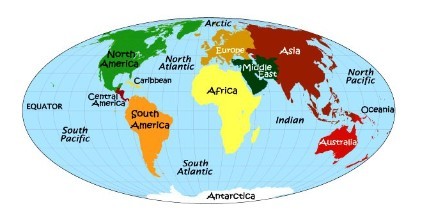COURSE DESCRIPTION

Sixth Grade Social Studies is a study of the patterns and interactions of countries in the Western Hemisphere. Students will determine information about people, places, and environment through the use and construction of geography tools. From an understanding of the physical and human characteristics of places, students will study the effects of the interaction between human and physical systems. With an emphasis on resource distribution and use, they will determine how economic, political, cultural, and social processes interact to shape patterns of human populations, interdependence, cooperation, and conflict.
CHAPTERS
Ch.1 – Geography Fundamentals
Map Skills
Impacts on Geography
Geography: World Regions
Ch.2 – Studying History
Primary and Secondary Sources
Ch.3 – Early Humans and the Agricultural Revolution
Impact of Geography on Early Civilizations
Early Human Migration
Neolithic Revolution: Introduction and Impact of FarmingAssyrians, Chaldeans, and Ancient Persia Project
Ch.4 – Mespotamia
Ancient Mesopotamia
Mapping on Mesopotamia Assignment
Assyrians, Chaldeans, and Ancient Persia Project
Ch.5 – Ancient Egypt
Early Egyptian Civilizations
Ancient Egyptian Geography
Ch.6 – Ancient India
Indus River Valley Civilization of Ancient India
Hinduism
Buddhism
Mauryan Civilization
Gupta Empire
Ch.7 – Ancient China
Yellow River Valley Civilization
Classical Civilization: Chinese Dynastic Cycles
Legalism, Confucianism, and Taoism in Ancient China
Han Dynasty of China
Ch.8 – Ancient Greece
Ancient Greece Vocabulary
Greece: Athens and Sparta
Ancient Greece City-State Comparison
Contributions of Ancient Greece
Peloponnesian Wars
Ch.9 – Ancient Rome
Roman Empire: Analyzing Maps
Foundations of Roman Society
Decline of the Roman Republic
Pax Romana
Preservation of Greek Culture
The Birth of Christianity
The Fall of the Roman Empire


